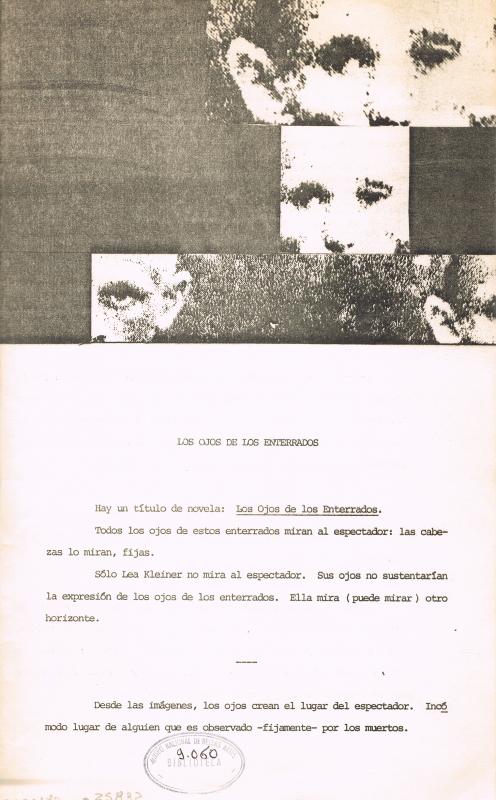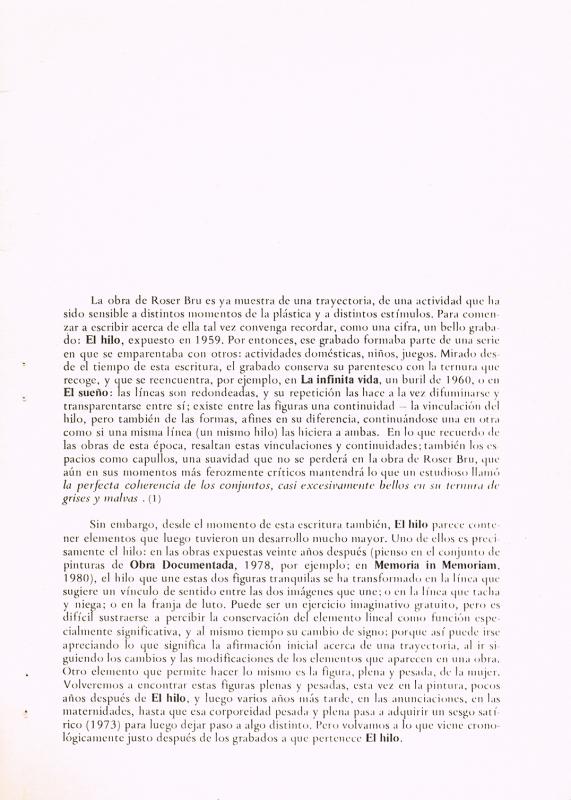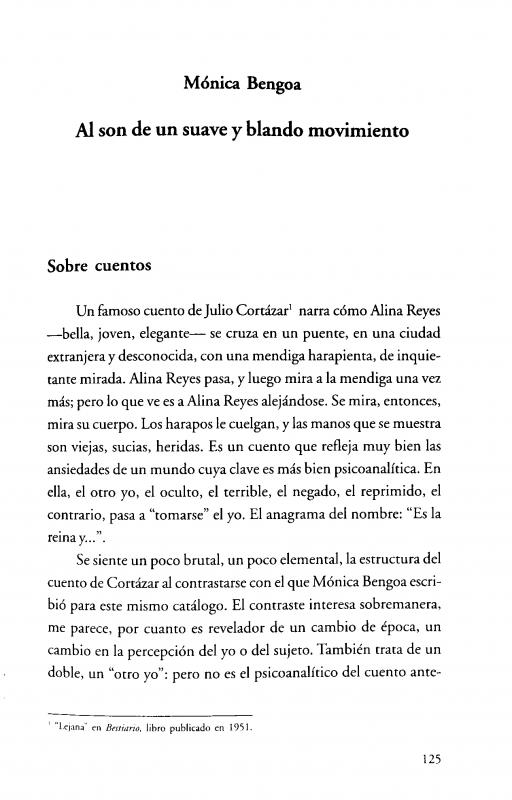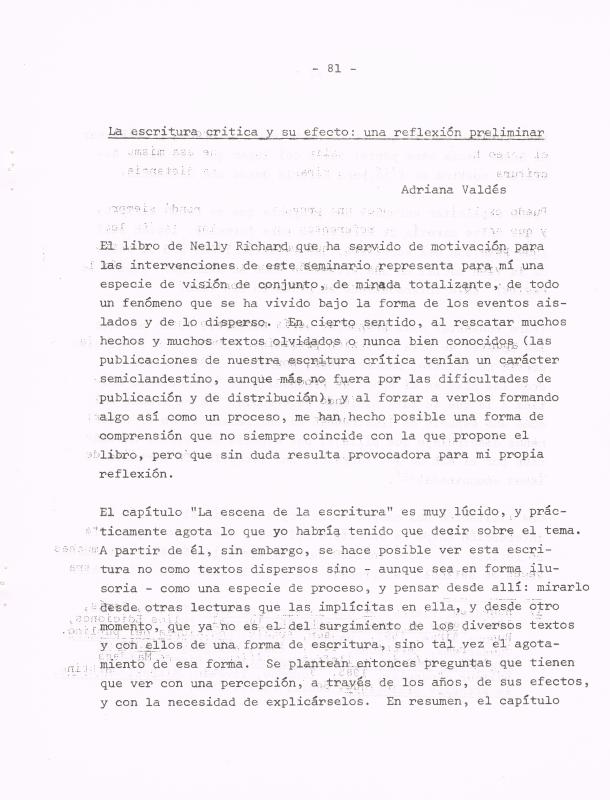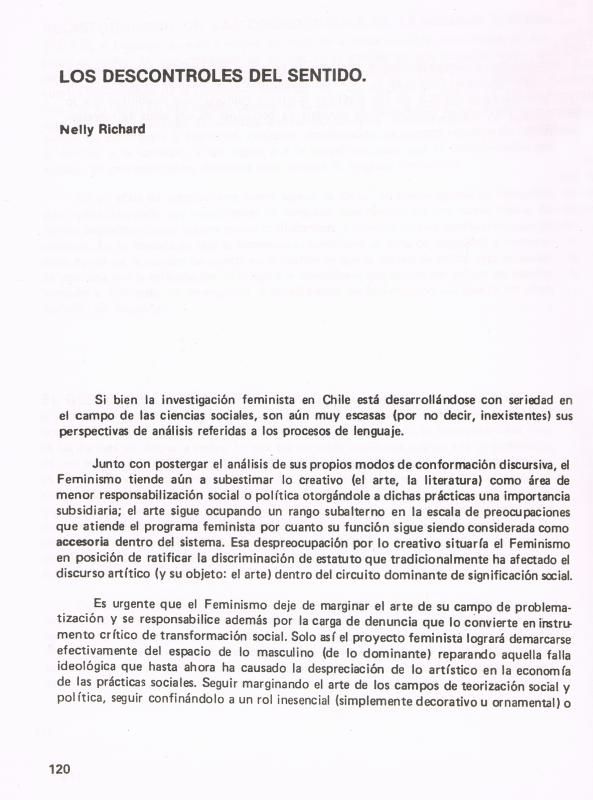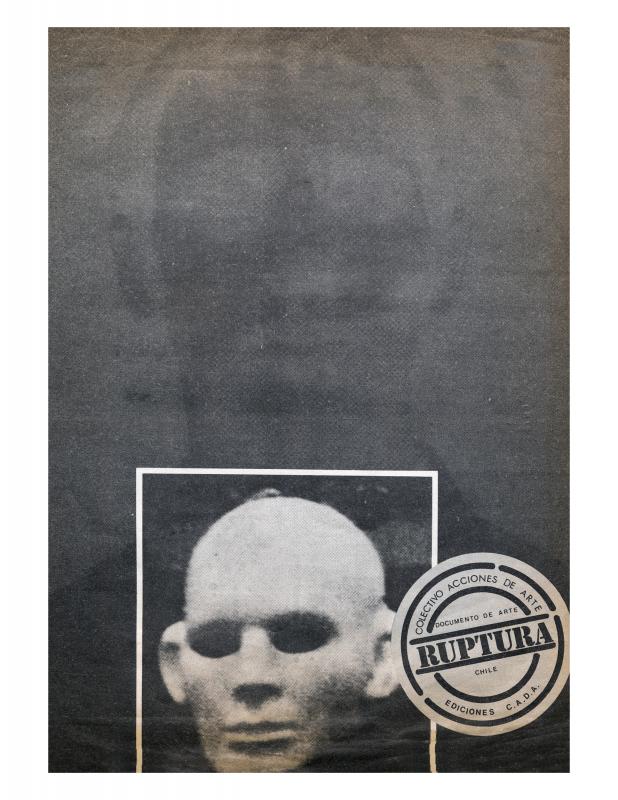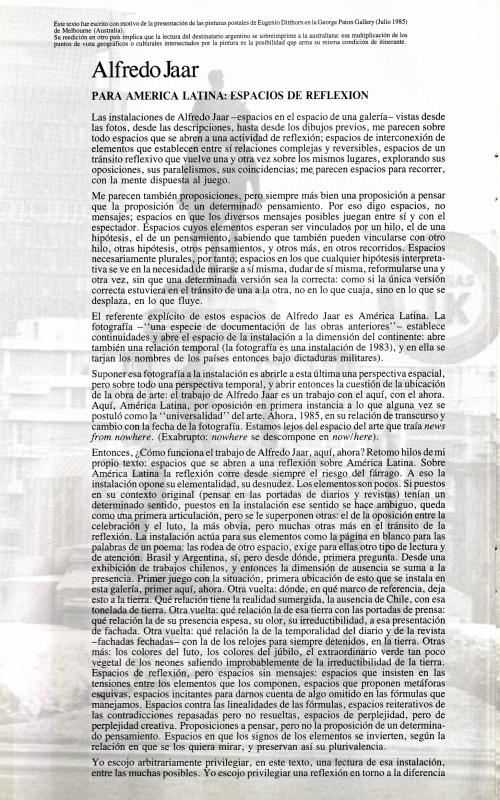In “Arte, mujer, imagen,” written in 2005, the essayist Adriana Valdés (b. 1943) follows a line of inquiry that she has been pursuing since the late 1970s on the subject of women’s art and their production. Valdés has written extensively about the work of the painter Roser Bru (b. 1923) from an analytical perspective and through the prism of gender. Among her essays on Bru, see the following in the ICAA Digital Archive: “Los ojos enterrados” (doc. no. 740321) about the painter’s 1977 exhibition Kafka y nosotros and “Adriana Valdés: Roser Bru” (doc. no. 747917), a joint publication produced in 1983 in which they discussed Bru’s painting by periods. In the year 2000 Valdés wrote “(quisiera hacer un texto tan fino como tu obra)” (I Would Like to Write a Text That Was as Fine as Your Work) (doc. no. 775512) about the artist Mónica Bengoa (b. 1969), a member of the Nineties generation.
The 1970s and 1980s saw an unprecedented number of written works produced in Chilean art circles that included lengthy discussions about art production, literature, philosophy, feminist criticism, and the ideas expounded by the theorist and cultural critic Nelly Richard (b. 1948). Richard, the writer Diamela Eltit (b. 1949), and Valdés were among those generating those writings. The feminist criticism that was an integral part of these writings appealed to minorities, to “the repressed” aspects of “the feminine,” which made it possible to challenge the dominant discourse endorsed by the military dictatorship and by the art tradition. Against the backdrop of the Escena de Avanzada (a term coined by Richard), Valdés discussed its scope in “La escritura crítica y su efecto: una reflexión preliminar” (doc. no. 738636), the essay included in Arte en Chile desde 1973. Escena de Avanzada y Sociedad (Art in Chile Since 1973. Escena de Avanzada and Society), the seminar produced a year after Richard’s book Margins and Institutions. Art in Chile Since 1973 was published in Australia. [For other texts about feminist thinking, see: “Los descontroles del sentido” (doc. no. 732038) by Richard and “Un filme subterráneo” (doc. no. 731801) by Eltit and Rosenfeld.]
Valdés’s writing refers to the Avanzada but is not limited to it, since she worked with a number of different artists (including Alfredo Jaar and Roser Bru) who were close to the Escena group but produced a different kind of work. Jaar, for example, did most of his work outside of Chile. [See “Alfredo Jaar: Para América Latina espacios de reflexión” (doc. no. 734782).]

